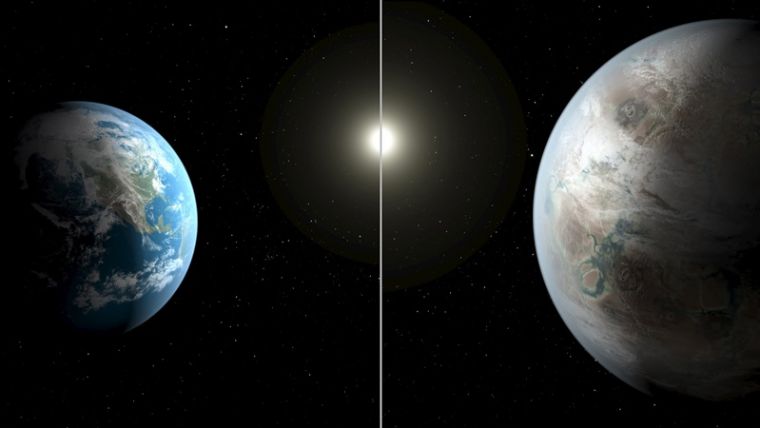Earth-like planet found circling star similar to sun at same distance as Earth's orbit

The National Aeronautics and Space Administration (NASA) announced on Thursday that it has found another planet in the Universe that closely resembles Earth.
In a news conference on Thursday, NASA's top officials announced that scientists using the agency's powerful Kepler telescope have found a planet beyond the solar system that is a close match to Earth.
The planet is about 60 percent bigger than Earth and located about 1,400 light years away in the constellation Cygnus, the officials said.
What makes the new find more promising than the others is that the newly found planet, known as Kepler-452b, is circling a star that is very similar but older than the sun at a distance about the same as Earth's orbit, they said.
"It's great progress in finding a planet like Earth that is similar in size and temperature around a sun-like star," said Jeff Coughlin, Kepler research scientist at the SETI Institute in Mountain View, California, during a conference call with reporters at NASA headquarters in Cape Canaveral, Florida.
Based on its size, scientists estimate that Kepler-452b is rocky and Earth-like and positioned at the right distance for liquid surface water, the ingredient believed to be necessary for life.
In an earlier statement, NASA hinted of a major announcement on Thursday. "Exoplanets, especially small Earth-size worlds, belonged within the realm of science fiction just 21 years ago," the NASA statement read.
"Today, and thousands of discoveries later, astronomers are on the cusp of finding something people have dreamed about for thousands of years — another Earth," the space agency added.
Ever since May 2009, the Kepler Space Telescope has been scouring outer space for signs of habitable planets outside the Solar System.
To date, more than 4,000 planets have been found under the Kepler mission. Of this number, more than 20 have been identified to be "potentially habitable" located in the so-called "'Goldilocks Zone."
One of these planets is Kepler-186f, the first validated Earth-size planet to orbit another star in the habitable "Goldilocks Zone."
In attendance during Thursday's conference call were John Grunsfeld, an associate administrator for NASA's Science Mission Directorate in Washington; Jeff Coughlin, a Kepler research scientist at the SETI Institute in Mountain View, California; Jon Jenkins, Kepler data analysis lead at NASA's Ames Research Center in Moffett Field, California and Didier Queloz, a professor of astrophysics at the University of Cambridge, United Kingdom.











